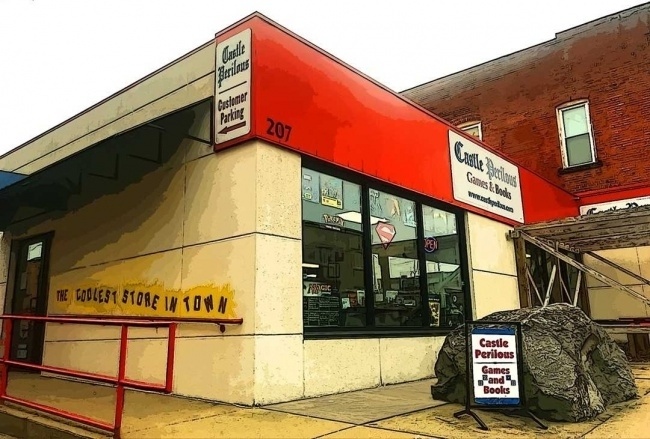Rolling for Initiative is a weekly column by Scott Thorne, PhD, owner of Castle Perilous Games & Books in Carbondale, Illinois and instructor in marketing at Southeast Missouri State University. This week, Thorne expands upon the slowdown at the ports and explains the causes of the trucker shortage.
Ryan Peterson, whose Twitter thread on the slowdown at the Ports of Los Angeles and Long Beach provided the gist of last week’s column (see “Have We Bought Too Much Stuff? Probably“) published a follow up in which he laid much of the problems with today’s supply chain at the feet of JIT (“just in time”) and ROE (“return on equity”).
JIT, as I have discussed before, focuses on wringing as much efficiency out of the supply chain as possible (see “Unraveling the Supply Chain? “). The supply chain’s focus centers on moving product from point A to point B as efficiently and as cheaply as possible. In the game industry, as in most B2C-focused supply chains, we’ve designed the system to move products from the publisher to the consumer, getting it to the consumer as quickly as possible while minimizing the cost of doing so and keeping as little product in the supply chain as possible.
Ideally, as the consumer purchases one copy of Gloomhaven and carries it out the front door, another one comes in the back door. Any extra product on store or warehouse shelves or in transit is operating capital tied up that could be invested elsewhere. So, for about 50 years, companies have worked to make the supply chain run as smoothly and leanly as possible. Doing so gets the minimum number of products needed on the shelf at any one time, and avoids tying up capital and maximizes profitably for members of the channel. Unfortunately, streamlining the system in this way also removes all possible redundancy from the system as any redundancy increases costs, reduces profits, and lessens the return on equity.
In short, JIT works great, until it doesn’t.
Also, as noted last week, a more immediate problem is the storage problem of excess shipping containers. Some additional reading on the subject indicated that the ordinances limiting the stacking of excess shipping containers to two high was not due to safety concerns, but rather a case of NIMBYism. Residents of the area felt that stacking containers any higher than two created an eyesore, hence the limitation.
This situation will shake itself out over the next six months or so. A greater problem is the lack of truck drivers, which often move products in the chain the “last mile”. According to Quartz, there is not so much a truck driver shortage as there is a truck driver turnover, averaging 94% per year since 1995. That means that trucking companies refill nearly every driver position every year. There is not a shortage per se. About 2 million work as professional truck drivers and states license roughly another 450,000 per year. Truck driver is the most common job in 29 states. The problem is keeping them.
Jobs in factories and construction offer comparable pay and don’t require 70 hour weeks, sleeping in your vehicle in parking lots and waiting in long lines, without pay, to pick up containers from overcrowded port terminals. One third of drivers quit in the first three months after getting their license. However, the stress the pandemic has put on the trucking industry has forced companies to increase pay an average of 7% since April, offer $1,000 bonuses to drivers stuck in line and guaranteeing minimum weekly salaries. Of course, this extra pay increases the cost of transportation which will eventually get passed along the channel: meaning price increases to distributors, retailers, and eventually the customer.
Your thoughts? Post them in the comments or email them to castleperilousgames@gmail.com.
The opinions expressed in this column are solely those of the writer, and do not necessarily reflect the views of the editorial staff of ICv2.com.
Source: ICv2


